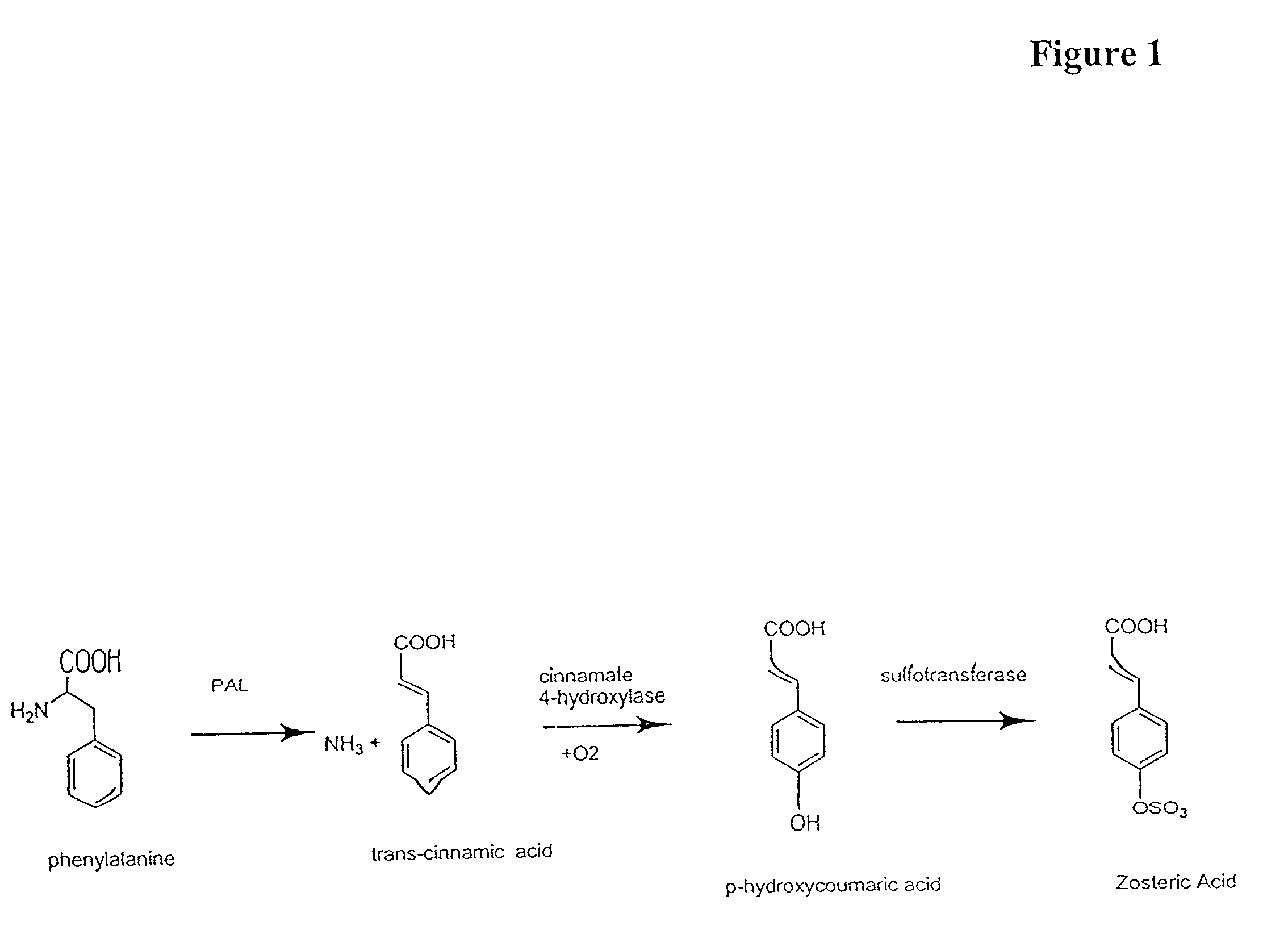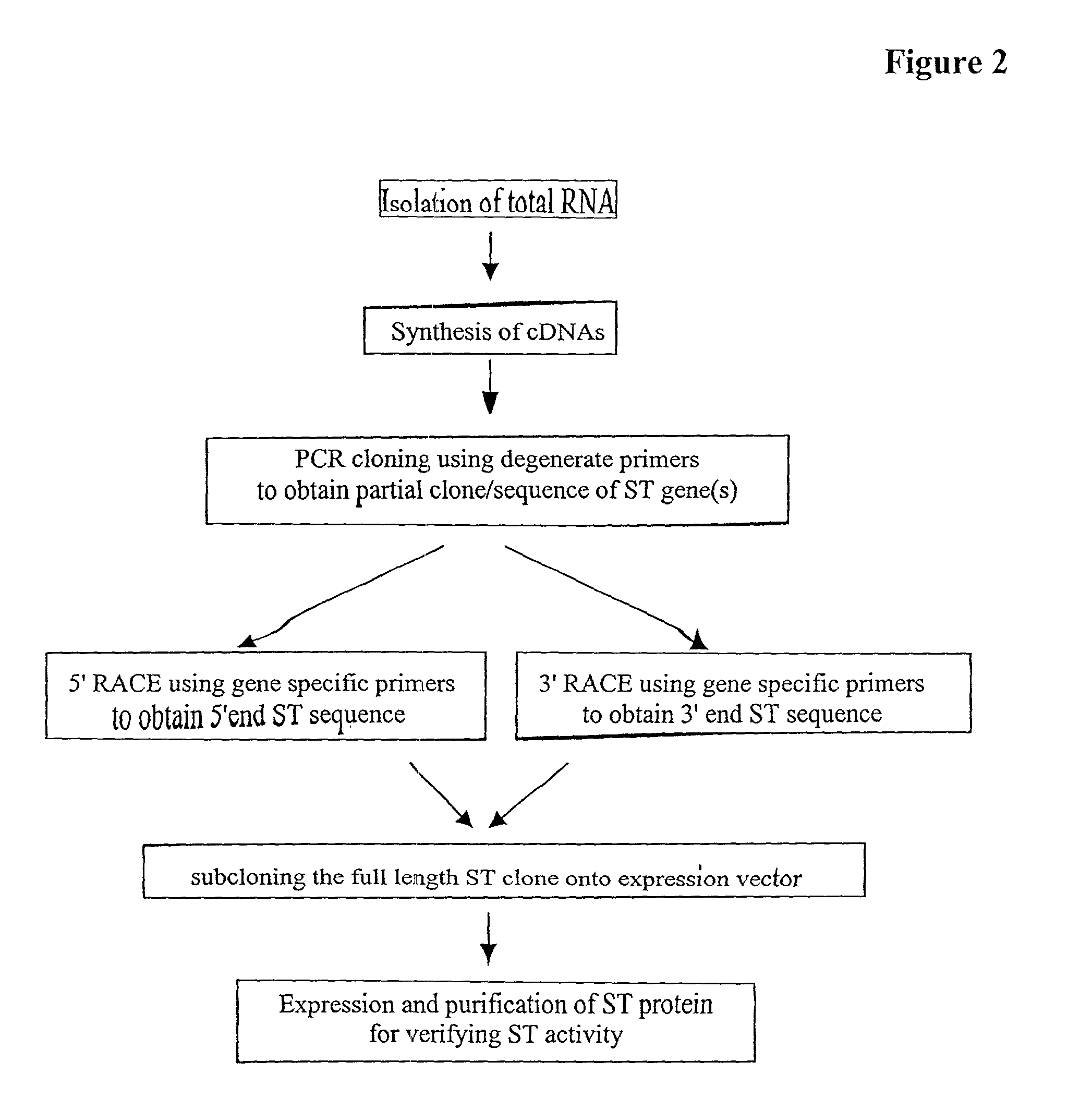Transgenic plants incorporating traits of zostera marina
a technology of zostera marina and transgenic plants, which is applied in the direction of transferases, lysine, biocide, etc., can solve the problems of limited breeding techniques, limited development of crop plants with desirable new genetic traits, and limited individual genetic diversity limitations
- Summary
- Abstract
- Description
- Claims
- Application Information
AI Technical Summary
Problems solved by technology
Method used
Image
Examples
Embodiment Construction
[0038] 4.1. General
[0039] In general, the invention provides transgenic plants incorporating heterologous genes that confer or contribute to one or more traits of a family of marine vascular plant which includes Zostera marina.
[0040] 4.2. Definitions
[0041] For convenience, the meaning of certain terms and phrases employed in the specification, examples, and appended claims are provided below.
[0042] The term "abzyme" refers to an immunoglobulin molecule capable of acting as an enzyme or a catalyst.
[0043] The term "agonist", as used herein, is meant to refer to an agent that mimics or upregulates (e.g. potentiates or supplements) a bioactivity. For example, a sulfotransferase agonist can be a wild-type sulfotransferase protein or derivative thereof having at least one bioactivity of the wild-type sulfotransferase receptor binding activity. An agonist can also be a compound which increases the interaction of a bioactive polypeptide with another molecule, for example, a receptor. Agonis...
PUM
| Property | Measurement | Unit |
|---|---|---|
| diameter | aaaaa | aaaaa |
| diameter | aaaaa | aaaaa |
| pH | aaaaa | aaaaa |
Abstract
Description
Claims
Application Information
 Login to View More
Login to View More - R&D
- Intellectual Property
- Life Sciences
- Materials
- Tech Scout
- Unparalleled Data Quality
- Higher Quality Content
- 60% Fewer Hallucinations
Browse by: Latest US Patents, China's latest patents, Technical Efficacy Thesaurus, Application Domain, Technology Topic, Popular Technical Reports.
© 2025 PatSnap. All rights reserved.Legal|Privacy policy|Modern Slavery Act Transparency Statement|Sitemap|About US| Contact US: help@patsnap.com



